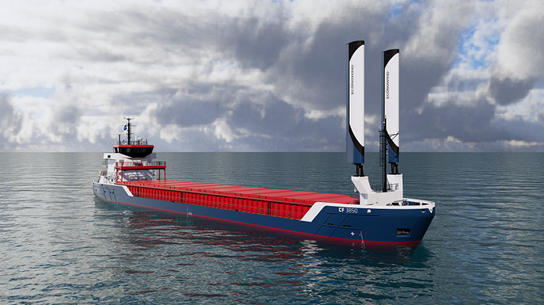Written by Margarita Kyrkou, Surveying Engineer and GIS Specialist at Wattcrop.
In an era where environmental consciousness is at its peak, industries across the globe are under pressure to adopt sustainable practices. Among these, the shipping industry, known for its significant contribution to global emissions and pollution, is undergoing a profound transformation towards greener practices. Green shipping, an umbrella term for sustainable initiatives within maritime transportation, is gaining momentum as stakeholders recognize the urgency of reducing the industry’s environmental footprint.
The urgency for green shipping stems from the environmental challenges posed by traditional maritime practices. Ships, primarily powered by heavy fuel oil, emit pollutants such as sulfur dioxide, nitrogen oxides, and carbon dioxide, contributing to air and water pollution. Additionally, oil spills, ballast water discharge, and marine litter further degrade marine ecosystems.
Embracing sustainability in shipping requires a multifaceted approach that addresses various aspects of maritime operations:
-
Alternative Fuels and Propulsion Systems
Transitioning from conventional fossil fuels to cleaner alternatives is a cornerstone of green shipping. LNG (liquefied natural gas), hydrogen, ammonia, and biofuels are emerging as viable options, offering lower emissions and reduced environmental impact. Furthermore, innovative propulsion systems such as wind-assisted propulsion and electric propulsion are being explored to complement fuel advancements.
-
Energy Efficiency Measures
Improving energy efficiency is critical for reducing emissions and operational costs. Technologies such as hull optimization, waste heat recovery systems, and energy-efficient engines help ships minimize fuel consumption and greenhouse gas emissions. Additionally, adopting slow steaming practices conserves fuel while reducing emissions per voyage.
-
Emission Control and Compliance
Regulatory frameworks like the International Maritime Organization’s (IMO) sulfur and nitrogen oxide emission regulations mandate the use of cleaner fuels and emissions reduction technologies. Scrubbers, which remove sulfur oxides from exhaust gases, and selective catalytic reduction systems, which reduce nitrogen oxide emissions, are becoming prevalent onboard vessels to ensure compliance with these regulations.
-
Sustainable Ship Design and Construction
Incorporating eco-friendly design principles during ship construction can significantly reduce environmental impact throughout the vessel’s lifecycle. Optimizing hull shapes, using lightweight materials, and implementing efficient systems minimize fuel consumption and emissions. Additionally, integrating renewable energy sources such as solar panels and wind turbines further enhances sustainability.
-
Digitalization and Smart Technologies
Harnessing digitalization and smart technologies enhances operational efficiency and reduces environmental impact. Real-time monitoring systems, predictive analytics, and voyage optimization software enable ships to optimize routes, reduce fuel consumption, and minimize emissions. Furthermore, blockchain technology facilitates transparent and traceable supply chains, promoting sustainability and accountability.
Additionally, embracing green shipping offers a myriad of benefits for stakeholders across the maritime industry:
Environmental Preservation: Reducing emissions and minimizing pollution safeguards marine ecosystems and mitigates the impact of climate change.
Cost Savings: Improving energy efficiency and adopting sustainable practices lower fuel consumption and operational costs, enhancing profitability in the long run.
Regulatory Compliance: Adhering to stringent environmental regulations ensures regulatory compliance and minimizes the risk of penalties and fines.
Competitive Advantage: Embracing sustainability enhances brand reputation and attracts environmentally conscious customers, providing a competitive edge in the market.
Futureproofing: Investing in green technologies and practices future-proofs businesses against evolving regulatory requirements and societal expectations.
The transition towards green shipping signifies a paradigm shift in the maritime industry, driven by the imperative to mitigate environmental degradation and embrace sustainability. By embracing alternative fuels, optimizing energy efficiency, complying with regulations, adopting eco-friendly design practices, and leveraging digitalization, stakeholders can navigate towards a more sustainable future for shipping. As the industry continues to evolve, collaboration, innovation, and commitment are essential to realizing the vision of a cleaner, greener maritime sector.
The German government has granted a subsidy for the construction of a series of fully electric freighters, the Damen Combi Freighter (CF) 3850 class, which will have parallel systems to harness wind energy for auxiliary propulsion.


